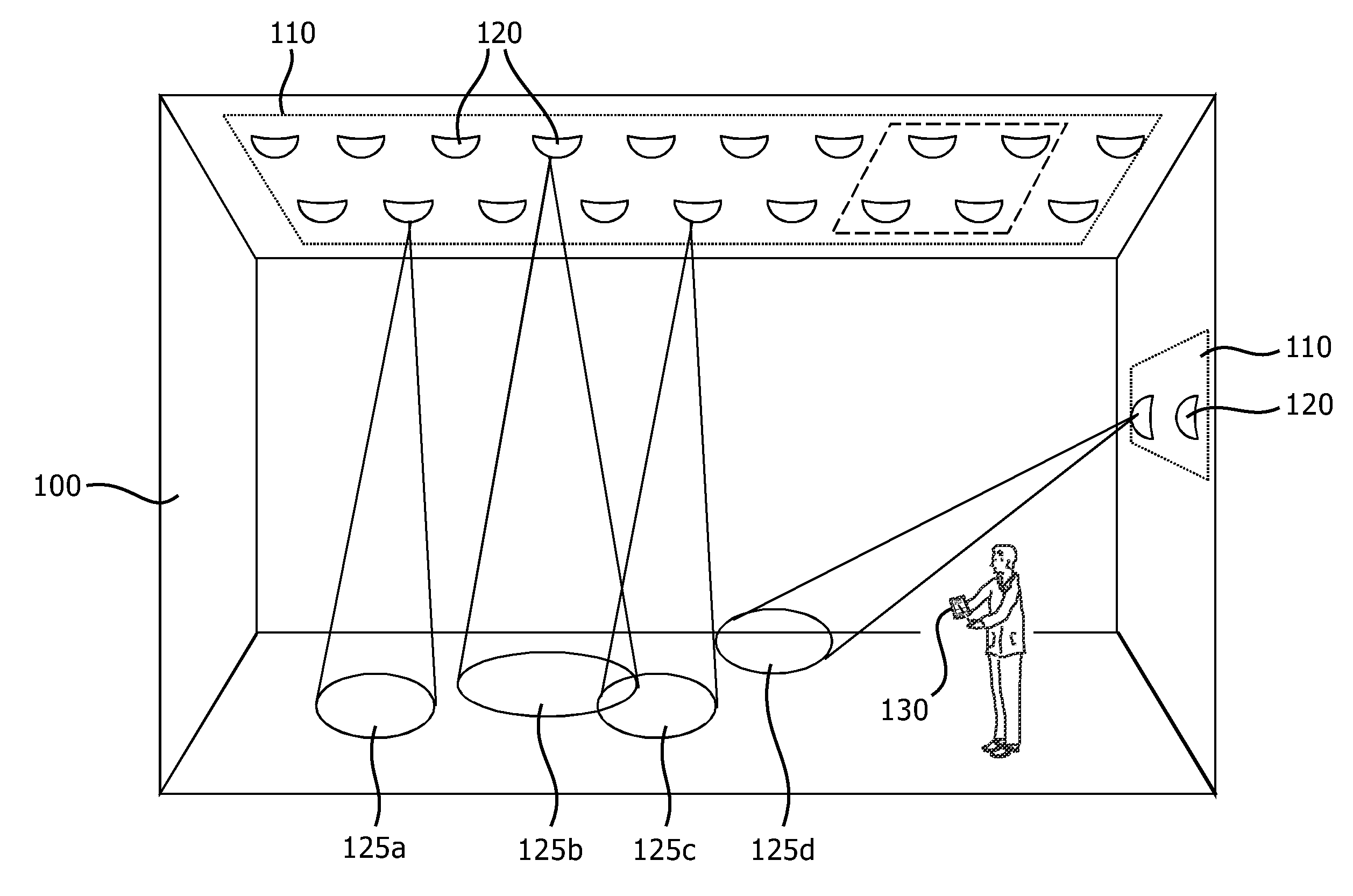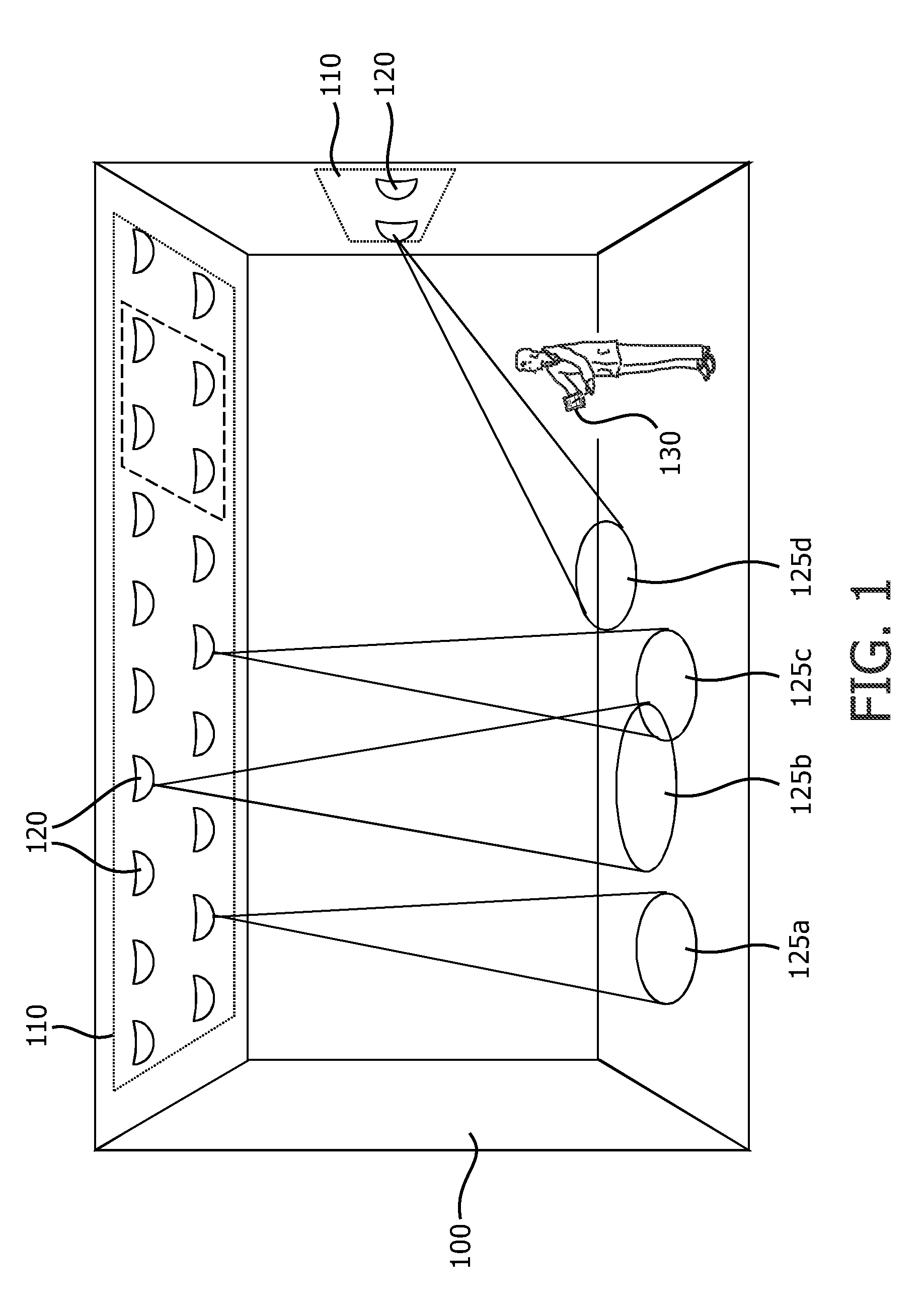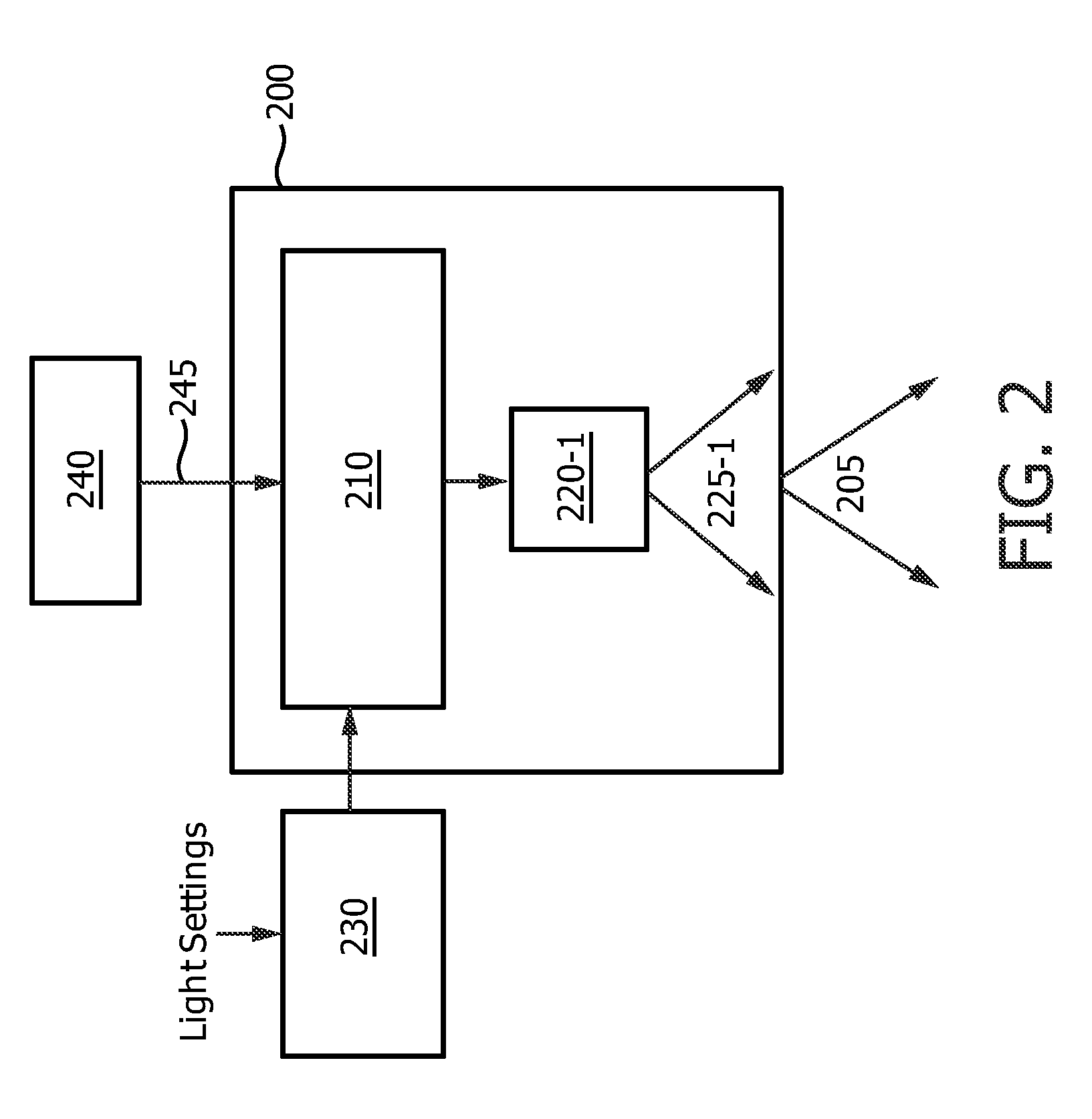Method and System for 2D Detection of Localized Light Contributions
a localized light and detection method technology, applied in the field of illumination systems and optical receivers, can solve the problems of high acquisition rate, inability to detect embedded codes present at single positions, and use of advanced and expensive cameras capable of providing high acquisition rate, so as to achieve less expensive effects
- Summary
- Abstract
- Description
- Claims
- Application Information
AI Technical Summary
Benefits of technology
Problems solved by technology
Method used
Image
Examples
Embodiment Construction
[0046]In the following description, numerous specific details are set forth to provide a more thorough understanding of the present invention. However, it will be apparent to one of skill in the art that the present invention may be practiced without one or more of these specific details. In other instances, well-known features have not been described in order to avoid obscuring the present invention.
[0047]FIG. 1 shows a structure 100—in this case a room—with an installed illumination system 110. The illumination system 110 comprises one or more of light sources 120 and one or more controllers (not shown in FIG. 1) controlling the light sources 120. When driven with an electrical signal, the light sources 120 illuminate parts of the structure 100, the illumination contributions from the various light sources 120 shown as footprints 125a-125d. The light sources 120 may comprise high / low pressure gas discharge sources, inorganic / organic light emitting diodes, laser diodes, incandescen...
PUM
 Login to View More
Login to View More Abstract
Description
Claims
Application Information
 Login to View More
Login to View More - R&D
- Intellectual Property
- Life Sciences
- Materials
- Tech Scout
- Unparalleled Data Quality
- Higher Quality Content
- 60% Fewer Hallucinations
Browse by: Latest US Patents, China's latest patents, Technical Efficacy Thesaurus, Application Domain, Technology Topic, Popular Technical Reports.
© 2025 PatSnap. All rights reserved.Legal|Privacy policy|Modern Slavery Act Transparency Statement|Sitemap|About US| Contact US: help@patsnap.com



